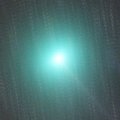
|
It became so bright as 4.7 mag, and so large as 20 arcmin in June (June 12, Marco Goiato). Now it is fading. But it is still bright as 5.9 mag (July 13, Marco Goiato). It became observable again after early July in the Northern Hemisphere, and it keeps observable for a long time after this. In the Southern Hemipsphere, it keeps observable all the period until the comet fades out.
Date(TT) R.A. (2000) Decl. Delta r Elong. m1 Best Time(A, h)
July 12 3 13.24 7 30.2 0.367 0.907 62 5.8 5:37 (224, 37)
July 19 3 2.33 11 33.4 0.420 0.959 70 6.4 5:34 (212, 38)
|

|
Great outburst occured on Oct. 24, and it bacame a naked eye comet of 2 mag. It kept so bright as 5.5 mag still on Apr. 30 (Carlos Labordena), but it was extremely faint and difficult to see. The size was so large, the diameter was larger than 60 arcmin. It is not observable in this summer. But it will become observable in good condition in autumn again. The extremely faint large diffuse object may be detected with a best sky condition, around 5-6 mag with a diameter of 1 or 2 degrees.
Date(TT) R.A. (2000) Decl. Delta r Elong. m1 Best Time(A, h)
July 12 7 17.74 32 20.3 4.530 3.536 10 6.0 5:37 (245,-22)
July 19 7 27.87 31 53.1 4.549 3.563 12 6.0 5:34 (244,-19)
|
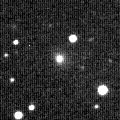
|
It is already very bright as 9.5 mag (June 29, Marco Goiato). Brightening well, and expected to be 6 mag in September. However, it keeps moving in the southern sky, and it is unobservable for a while in the Northern Hemisphere. It will appear in the evening sky at 6 mag in late September, but it keeps locating in the evening low sky until the end of 2008 when it fades out down to 9 mag. Then it turns to appear in the morning sky, and it keeps observable in the northern sky after that while fading gradually. In the Southern Hemisphere, it keeps observable until late October.
Date(TT) R.A. (2000) Decl. Delta r Elong. m1 Best Time(A, h)
July 12 7 26.68 -39 31.7 1.874 1.652 61 8.5 5:37 (307, 17)
July 19 7 50.71 -41 16.1 1.768 1.574 62 8.2 5:34 (308, 18)
|
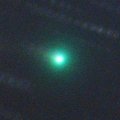
|
Now it is so bright as 9.8 mag (July 13, Marco Goiato). It will be bright at 10 mag in July. However, it keeps locating extremely low for a while in the Northern Hemisphere. It will be getting higher gradually after late July, then it keeps observable while fading gradually. It will be visible visually until September.
Date(TT) R.A. (2000) Decl. Delta r Elong. m1 Best Time(A, h)
July 12 4 26.29 22 43.7 1.518 1.012 41 10.0 5:37 (229, 14)
July 19 4 55.02 24 16.5 1.563 1.045 41 10.1 5:34 (228, 12)
|
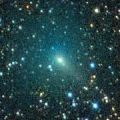
|
It brightened rapidly, and now it is so bright as 9.8 mag (July 27, Juan Jose Gonzalez). In the Northern Hemisphere, it keeps observable until 2009 spring when the comet becomes faint. It will move near by the Northern Pole from summer to autumn, and will be observable all night. It keeps bright at 10 mag until August, then it will be visible visually until around October. In the Southern Hemisphere, it will never be observable again.
Date(TT) R.A. (2000) Decl. Delta r Elong. m1 Best Time(A, h)
July 12 22 3.39 70 17.3 1.509 1.724 83 10.2 2:43 (180,-15)
July 19 22 3.28 74 53.5 1.541 1.726 82 10.2 2:15 (180,-20)
|

|
Marco Goiato reported it was 9.5 mag on July 13, much brighter than this ephemeris. But no other observers reported it recently. The condition in this apparition is bad. In the Southern Hemisphere, it keeps extremely low, or under the horizon, so it will not be observable. In the Northern Hemisphere, it will appear in the morning sky soon. Then it keeps observable and fading in the morning sky.
Date(TT) R.A. (2000) Decl. Delta r Elong. m1 Best Time(A, h)
July 12 5 29.34 18 36.7 2.177 1.360 27 11.1 5:37 (242, 6)
July 19 5 52.75 20 29.9 2.160 1.355 28 11.1 5:34 (240, 5)
|
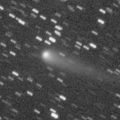
|
Now it is bright as 11.9 mag (June 28, Juan Jose Gonzalez), brightening almost as expected. It will reach to 10.5 mag and will be observable in good condition in 2008 autumn. It keeps observable, visible visually, brighter than 14 mag for one year until 2009 May.
Date(TT) R.A. (2000) Decl. Delta r Elong. m1 Best Time(A, h)
July 12 2 39.71 42 7.5 2.848 2.537 62 11.3 5:37 (199, 9)
July 19 2 55.46 44 1.8 2.772 2.516 64 11.2 5:34 (197, 8)
|
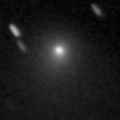
|
It reached to 10.9 mag in May (May 11, Marco Goiato). Now it is fading slowly. In the Southern Hemisphere, it keeps observable until late August when it fades down to 12 mag. In the Northern Hemisphere, it will be unobservable soon. But it will appear in the morning sky again at 13 mag at the end of 2008, then it keeps bright and observable for a while.
Date(TT) R.A. (2000) Decl. Delta r Elong. m1 Best Time(A, h)
July 12 11 18.70 -6 36.1 3.061 2.765 63 11.6 18:34 (119, 44)
July 19 11 29.48 -5 44.2 3.150 2.768 59 11.7 18:37 (115, 40)
|
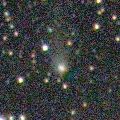
|
Now it is bright as 11.3 mag (June 27, Juan Jose Gonzalez). It keeps bright at 12 mag for a long time from 2008 spring to 2009 spring. However, it is only observable until mid August in the Northern Hemisphere because the comet moves southwards. It keeps observable for a long time in the Southern Hemisphere.
Date(TT) R.A. (2000) Decl. Delta r Elong. m1 Best Time(A, h)
July 12 16 6.09 -28 59.0 2.160 2.964 134 11.9 20:42 (180, 84)
July 19 15 54.03 -30 36.4 2.222 2.932 125 11.9 20:03 (180, 86)
|
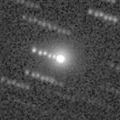
|
It had been brightening as expected, although looking very small, until mid June, and it brightened up to 13.7 mag on June 14 (David Seargent). However, it suddenly brightened in late June, and reached up to 10.6 mag (June 28, Juan Jose Gonzalez). Then it slightly faded down, and now it is 11.5 mag (July 8, Juan Jose Gonzalez). But it is still brighter than this ephemeris. It is expected to reach to 6 mag in 2009 February. It keeps observable until October.
Date(TT) R.A. (2000) Decl. Delta r Elong. m1 Best Time(A, h)
July 12 20 29.21 -17 24.7 1.832 2.824 164 12.3 1:10 (180, 72)
July 19 20 5.44 -18 37.0 1.733 2.748 176 12.1 0:20 (180, 74)
|
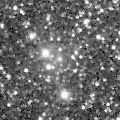
|
Brightening rapidly as expected. It is already bright as 14.0 mag by CCD (June 27, Michael Jager), or 12.4 mag visually (July 6, Marco Goiato). A coma of about 1-2 arcmin is visible. It will be brightening rapidly after this. It will reach up to 9 mag and keep bright for a long time from summer to autumn. In the Northern Hemisphere, it becomes low in the south at brightest, but it keeps observable until it fades out.
Date(TT) R.A. (2000) Decl. Delta r Elong. m1 Best Time(A, h)
July 12 19 37.68 9 23.3 0.438 1.409 148 12.8 0:18 (180, 45)
July 19 19 42.81 5 42.7 0.404 1.389 153 12.2 23:52 (180, 50)
|
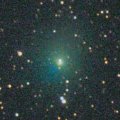
|
It reached up to 9.5 mag on Mar. 29 (Maik Meyer). Now it is fading slowly. It faded down to 10.7 mag on May 11 (Marco Goiato), and it was a diffuse object with a weak condensation. In the Northern Hemisphere, it will never be observable again. In the Southern Hemisphere, it keeps observable until it fades out. No observations have been reported recently, and the current brightness is uncertain.
Date(TT) R.A. (2000) Decl. Delta r Elong. m1 Best Time(A, h)
July 12 8 49.49 -23 58.4 2.264 1.792 50 12.6 18:34 ( 76, 24)
July 19 9 4.34 -26 56.8 2.332 1.863 50 12.8 18:37 ( 72, 22)
|

|
It was 15 mag on Jan. 14 (Michael Mattiazzo), brightening as expected. It will reach to 13.5 mag in the southern sky in spring and summer. In the Southern Hemisphere, it keeps observable for a long time after this. But in the Northern Hemisphere, it is not observable now. But it will appear in the morning sky at 15 mag in November, then it keeps observable while the comet will be fading slowly.
Date(TT) R.A. (2000) Decl. Delta r Elong. m1 Best Time(A, h)
July 12 8 1.91 -36 17.1 2.901 2.530 58 13.8 18:34 ( 60, 21)
July 19 8 22.05 -35 26.4 2.955 2.543 56 13.9 18:37 ( 59, 19)
|
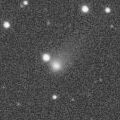
|
Now it is bright as 12.7 mag (Apr. 12, Marco Goiato). In the Northern Hemisphere, it will be getting lower gradually in the evening sky, and will be unobservable in late July. Then the comet will go southwards, so it will never be observable again in the Northern Hemisphere. In the Southern Hemisphere, it keeps observable in good condition for a long time until autumn.
Date(TT) R.A. (2000) Decl. Delta r Elong. m1 Best Time(A, h)
July 12 12 21.62 -9 52.7 3.023 3.001 79 13.9 18:34 (134, 57)
July 19 12 28.00 -11 13.8 3.101 2.993 74 13.9 18:37 (124, 54)
|

|
Now it is not observable. In the last season, it became so bright as 10 mag in 2008 January. It will appear in the morning sky in late August.
Date(TT) R.A. (2000) Decl. Delta r Elong. m1 Best Time(A, h)
July 12 7 10.99 26 11.6 7.053 6.041 5 14.1 5:37 (250,-17)
July 19 7 16.91 25 58.4 7.042 6.044 10 14.1 5:34 (248,-13)
|
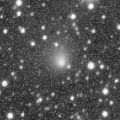
|
It is already bright as 13.2 mag and visible visually (July 8, Juan Jose Gonzalez). It is expected to reach to 11 mag in 2009 summer. Because it moves in the northern sky, it keeps observable until it becomes brightest in the Northern Hemisphere. Although it had been low for a while, it will be getting higher gradually after this.
Date(TT) R.A. (2000) Decl. Delta r Elong. m1 Best Time(A, h)
July 12 4 5.21 61 51.7 5.139 4.591 52 14.4 5:37 (201,-14)
July 19 4 7.41 62 54.5 5.025 4.546 56 14.3 5:34 (198,-13)
|
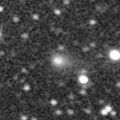
|
It was bright as 12.7 mag on May 12 (Juan Jose Gonzalez), and strongly condensed. However, it has been getting diffuse and fading rapidly after that. Now it is 14.5 mag (June 27, Michael Jager). A temporary outburst seems to be ending. It keeps observable in good condition until autumn. But it is moving southwards gradually, and the altitude will be getting somewhat lower in the Northern Hemisphere. It may fade out very rapidly after this. It is still bright visually as 12.5 mag on July 5 (Willian Souza), and 12.8 mag on July 8 (Marco Goiato).
Date(TT) R.A. (2000) Decl. Delta r Elong. m1 Best Time(A, h)
July 12 16 26.35 -17 39.0 1.660 2.506 137 14.5 21:03 (180, 73)
July 19 16 26.09 -18 17.0 1.731 2.518 131 14.8 20:36 (180, 73)
|

|
Now it is 12.7 mag (July 7, Juan Jose Gonzalez), bright and visible visually. It keeps observable visually at 13 mag at high location for a while.
Date(TT) R.A. (2000) Decl. Delta r Elong. m1 Best Time(A, h)
July 12 15 11.98 22 44.7 5.414 5.740 103 14.9 19:49 (180, 32)
July 19 15 7.10 22 30.7 5.528 5.752 97 14.9 19:16 (180, 33)
|

|
Now it is 16.1 mag, brightening well as expected (Mar. 30, S. G. McAndrew). It is expected to brighten up to 10 mag from late 2009 to early 2010. Because the comet moves in the southern sky for a long time, it keeps impossible or very hard to observe in the Northern Hemisphere until 2009 September. But after 2009 October, it is observable at 10 mag for a while in good condition. In the Southern Hemisphere, it keeps observable for a long time while brightening until 2009 June when it brightens to 11 mag. But it becomes unobservable around and after the brightest time.
Date(TT) R.A. (2000) Decl. Delta r Elong. m1 Best Time(A, h)
July 12 4 59.12 -37 6.6 5.452 5.166 68 15.1 5:37 (291, 42)
July 19 5 7.02 -37 28.0 5.361 5.110 70 15.0 5:34 (290, 45)
|
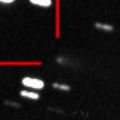
|
It was 17 mag in June and July, much fainter than this ephemeris. It will be getting higher gradually after this. It will be observable at 15 mag in good condition until November.
Date(TT) R.A. (2000) Decl. Delta r Elong. m1 Best Time(A, h)
July 12 1 58.46 9 49.0 2.102 2.152 78 15.2 5:37 (201, 43)
July 19 2 10.52 10 31.7 2.021 2.142 82 15.1 5:34 (196, 43)
|
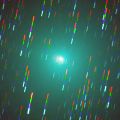
|
It passed near by Earth in early January, and it became a bright large object at 5.4 mag (Jan. 3, Seiichi Yoshida). It was visible with naked eyes. Now it is fading rapidly. It had faded down to 11.3 mag on May 10 (Marco Goiato). It has already moved away towards the southern sky, and it is no longer observable in the Northern Hemisphere. In the Southern Hemisphere, it keeps observable until it fades out.
Date(TT) R.A. (2000) Decl. Delta r Elong. m1 Best Time(A, h)
July 12 12 19.12 -50 8.9 2.101 2.438 96 15.4 18:34 ( 42, 67)
July 19 12 37.97 -48 38.9 2.227 2.507 93 15.8 18:37 ( 47, 66)
|

|
Not observed in this return yet. But appearing in the morning sky. Now it must be brightest. Yasukazu Ikari reported it was fainter than 15 mag on June 16. It will be getting higher gradually after this. It will be observable in good condition until autumn when it becomes fainter than 18 mag.
Date(TT) R.A. (2000) Decl. Delta r Elong. m1 Best Time(A, h)
July 12 2 36.46 9 52.6 1.754 1.702 70 15.7 5:37 (212, 39)
July 19 2 52.64 11 3.8 1.714 1.712 72 15.8 5:34 (209, 39)
|
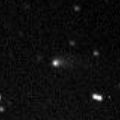
|
Now it is 16.6 mag (June 1, Gustavo Muler). It will be 15.5 mag from July to October. It locates somewhat low in the Northern Hemisphere, but it keeps observable around 16 mag until winter.
Date(TT) R.A. (2000) Decl. Delta r Elong. m1 Best Time(A, h)
July 12 21 40.95 -28 52.4 2.113 3.030 148 16.0 2:21 (180, 84)
July 19 21 37.18 -29 7.7 2.062 3.015 155 15.9 1:50 (180, 84)
|
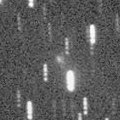
|
Now it is 16.0 mag (June 30, Michael Jager). It keeps observable in good condition after this in the Northern Hemisphere. It will be fading gradually, and will be fainter than 18 mag in November.
Date(TT) R.A. (2000) Decl. Delta r Elong. m1 Best Time(A, h)
July 12 23 25.88 41 36.4 1.951 2.288 95 16.0 4:06 (180, 13)
July 19 23 25.16 44 48.2 1.947 2.329 98 16.1 3:37 (180, 10)
|
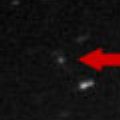
|
Now it is 16.8 mag (July 7, Gustavo Muler). It keeps observable while the comet will be brightening gradually after this. It will reach up to 14.5 mag in autumn. However, then it locates low in the evening sky, and it will be unobservable soon in December.
Date(TT) R.A. (2000) Decl. Delta r Elong. m1 Best Time(A, h)
July 12 15 23.70 -3 41.4 1.928 2.574 118 16.2 20:01 (180, 59)
July 19 15 24.02 -4 6.8 1.961 2.529 112 16.1 19:34 (180, 59)
|
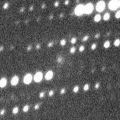
|
Now it is 15.0 mag (July 5, Michael Jager), brighter than this ephemeris. Moving northwards very fast, and it will be observable in good condition in the Northern Hemisphere after this. It keeps 16 mag until mid July. But it will be fainter than 18 mag in August.
Date(TT) R.A. (2000) Decl. Delta r Elong. m1 Best Time(A, h)
July 12 19 5.48 -23 58.2 1.295 2.309 174 16.2 23:40 (180, 79)
July 19 18 41.78 -20 6.4 1.362 2.353 162 16.4 22:49 (180, 75)
|
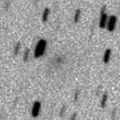
|
Now it is 16.8 mag (June 9, Yasukazu Ikari). It reaches to 16 mag from May to July, and observable in good condition.
Date(TT) R.A. (2000) Decl. Delta r Elong. m1 Best Time(A, h)
July 12 14 24.72 41 59.1 1.620 1.846 85 16.2 19:02 (180, 13)
July 19 14 27.10 35 2.1 1.673 1.873 84 16.3 18:37 (180, 20)
|
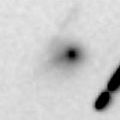
|
An outburst occured in late May, and it brightened up to 14.6 mag (May 23, Gustavo Muler). However, it faded down to the original brightness in late May. Now it is 17.3 mag (June 24, Catalina Sky Survey). It will reach to 14 mag in autumn, but it locates extremely low in the Northern Hemisphere. However, it keeps higher than 30 degree even in the Northern Hemisphere until August.
Date(TT) R.A. (2000) Decl. Delta r Elong. m1 Best Time(A, h)
July 12 11 54.90 20 24.8 1.736 1.548 62 16.4 18:34 (148, 28)
July 19 12 9.09 17 38.8 1.731 1.503 59 16.2 18:37 (142, 28)
|
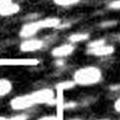
|
It was observed at 16.5-17 mag in 2007 autumn. Now it is getting higher again in the morning sky. It will be observable at 17 mag for a long time from summer to autumn.
Date(TT) R.A. (2000) Decl. Delta r Elong. m1 Best Time(A, h)
July 12 3 31.43 23 52.4 2.830 2.374 53 16.9 5:37 (218, 21)
July 19 3 43.59 24 35.7 2.785 2.397 57 16.9 5:34 (214, 22)
|
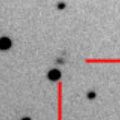
|
Not it is 17.7 mag (July 7, Siding Spring Survey). It will be brightening gradually after this, and reach to 12-13 mag in 2009 winter and spring. In the Northern Hemisphere, it keeps observable for a long time until 2009 May.
Date(TT) R.A. (2000) Decl. Delta r Elong. m1 Best Time(A, h)
July 12 21 53.90 -23 56.2 1.794 2.697 146 17.2 2:34 (180, 79)
July 19 21 50.27 -24 40.8 1.701 2.647 153 17.0 2:03 (180, 80)
|

|
It will brighten up to 12 mag in 2012. It is faint still in 2008, but observable at 17 mag in good condition.
Date(TT) R.A. (2000) Decl. Delta r Elong. m1 Best Time(A, h)
July 12 23 31.96 8 33.8 10.369 10.799 112 17.4 4:12 (180, 46)
July 19 23 29.97 8 30.5 10.225 10.762 119 17.4 3:42 (180, 46)
|

|
It was observed at 17.5-18 mag in 2006 and 2007. In 20080, it will be observable at 17.5-18 mag from summer to autumn.
Date(TT) R.A. (2000) Decl. Delta r Elong. m1 Best Time(A, h)
July 12 22 57.90 -18 6.3 3.409 4.140 130 17.4 3:38 (180, 73)
July 19 22 57.19 -18 48.8 3.340 4.142 137 17.4 3:10 (180, 74)
|
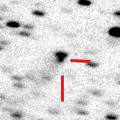
|
It was observed at 16.5-17 mag in 2006 and 2007. Because it is a very distant comet, it is observable at 17 mag still in 2008 in good condition.
Date(TT) R.A. (2000) Decl. Delta r Elong. m1 Best Time(A, h)
July 12 18 26.95 44 44.2 5.926 6.376 111 17.4 23:03 (180, 10)
July 19 18 18.35 44 46.8 5.963 6.395 110 17.4 22:27 (180, 10)
|
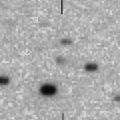
|
It will be observable at 17 mag in good condition in autumn.
Date(TT) R.A. (2000) Decl. Delta r Elong. m1 Best Time(A, h)
July 12 0 21.75 27 35.2 2.053 2.340 93 17.8 5:01 (180, 27)
July 19 0 30.05 28 28.2 1.975 2.332 97 17.7 4:42 (180, 27)
|
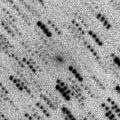
|
In April, it became so bright as 11.3 mag (Apr. 12, Marco Goiato). But CCD observers reported it was faint as 15 mag. It was difficult to see because extremely diffuse. In the Northern Hemisphere, it had been low until March, but now it locates high. But it is already fading. It has already faded down to 16.8 mag (June 13, Ken-ichi Kadota).
Date(TT) R.A. (2000) Decl. Delta r Elong. m1 Best Time(A, h)
July 12 20 4.86 28 2.7 0.898 1.730 129 17.9 0:45 (180, 27)
July 19 19 56.99 26 56.8 0.937 1.786 132 18.2 0:10 (180, 28)
|

|
The condition in the Northern Hemisphere was very good in first half of May, and it was observed at 16 mag. It will approach to the sun down to 0.1 A.U. on June 17. If it shows a cometary activity, it may become much brighter than this ephemeris. However, it is not observable on the earth.
Date(TT) R.A. (2000) Decl. Delta r Elong. m1 Best Time(A, h)
July 12 8 59.42 19 48.8 1.660 0.811 21 19.3 18:34 (115, 1)
July 19 9 30.73 18 4.2 1.816 0.964 22 19.7 18:37 (114, 2)
|

|
It is expected to reach up to 7 mag in winter, and will be observable in good condition. However, this comet has not been observed since 1986. It was not detected, fainter than 18 mag, on May 31 (Katsumi Yoshimoto). Nothing brighter than 20.6 mag was found around the predicted position on June 12 (Mitsunori Tsumura). It is predicted to be so faint as 20 mag still now. But it will brighten very rapidly near by the perihelion. It will be 18 mag in August. The condition of this apparition is good. It keeps observable for a long time until 2009 early summer both in the Northern Hemisphere and Southern Hemisphere.
Date(TT) R.A. (2000) Decl. Delta r Elong. m1 Best Time(A, h)
July 12 20 38.88 -23 51.0 1.299 2.291 163 19.9 1:19 (180, 79)
July 19 20 32.27 -24 14.7 1.217 2.226 170 19.3 0:45 (180, 79)
|

|
No observations have been succeeded since 2007 July. It was predicted to be so bright as 14 mag now. But actually, it is fainter than 19 mag and not detectable (June 1, Gustavo Muler). It will locate in good condition from spring to summer. But it seems to have already disappeared.
Date(TT) R.A. (2000) Decl. Delta r Elong. m1 Best Time(A, h)
July 12 22 27.76 12 50.9 1.543 2.268 123 20.2 3:08 (180, 42)
July 19 22 27.67 14 5.2 1.528 2.304 128 20.3 2:40 (180, 41)
|

|
It was observed at 16-17 mag at the discovery in 1999. It is predicted to be already 18 mag. But actually, it was not detected, fainter than 22.5 mag, in 2006 September (Carl Hergenrother). So it must be now fainter than at the discovery by 3-4 mag.
Date(TT) R.A. (2000) Decl. Delta r Elong. m1 Best Time(A, h)
July 12 0 17.26 4 59.7 3.883 4.244 103 21.6 4:57 (180, 50)
July 19 0 18.52 5 14.3 3.766 4.226 110 21.5 4:31 (180, 50)
|
|
![]()
 C/2006 OF2 ( Broughton )
C/2006 OF2 ( Broughton ) C/2006 Q1 ( McNaught )
C/2006 Q1 ( McNaught ) C/2007 G1 ( LINEAR )
C/2007 G1 ( LINEAR ) C/2007 N3 ( Lulin )
C/2007 N3 ( Lulin ) 6P/d'Arrest
6P/d'Arrest C/2008 C1 ( Chen-Gao )
C/2008 C1 ( Chen-Gao ) C/2006 U6 ( Spacewatch )
C/2006 U6 ( Spacewatch ) C/2007 B2 ( Skiff )
C/2007 B2 ( Skiff ) 29P/Schwassmann-Wachmann 1
29P/Schwassmann-Wachmann 1 C/2006 W3 ( Christensen )
C/2006 W3 ( Christensen ) P/2008 J2 ( Beshore )
P/2008 J2 ( Beshore ) C/2005 L3 ( McNaught )
C/2005 L3 ( McNaught ) C/2007 Q3 ( Siding Spring )
C/2007 Q3 ( Siding Spring ) 61P/Shajn-Schaldach
61P/Shajn-Schaldach 8P/Tuttle
8P/Tuttle 51P/Harrington
51P/Harrington 47P/Ashbrook-Jackson
47P/Ashbrook-Jackson C/2008 J6 ( Hill )
C/2008 J6 ( Hill ) 68P/Klemola
68P/Klemola C/2008 J5 ( Garradd )
C/2008 J5 ( Garradd ) C/2007 W3 ( LINEAR )
C/2007 W3 ( LINEAR ) 7P/Pons-Winnecke
7P/Pons-Winnecke 44P/Reinmuth 2
44P/Reinmuth 2 67P/Churyumov-Gerasimenko
67P/Churyumov-Gerasimenko C/2006 S3 ( LONEOS )
C/2006 S3 ( LONEOS ) P/2006 F1 ( Kowalski )
P/2006 F1 ( Kowalski ) C/2005 S4 ( McNaught )
C/2005 S4 ( McNaught ) P/2008 L2 ( Hill )
P/2008 L2 ( Hill ) 26P/Grigg-Skjellerup
26P/Grigg-Skjellerup 2008 HW1
2008 HW1 85P/Boethin
85P/Boethin C/2007 K3 ( Siding Spring )
C/2007 K3 ( Siding Spring ) P/1999 WJ7 ( Korlevic )
P/1999 WJ7 ( Korlevic )![]()





























